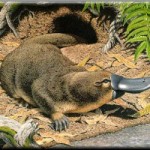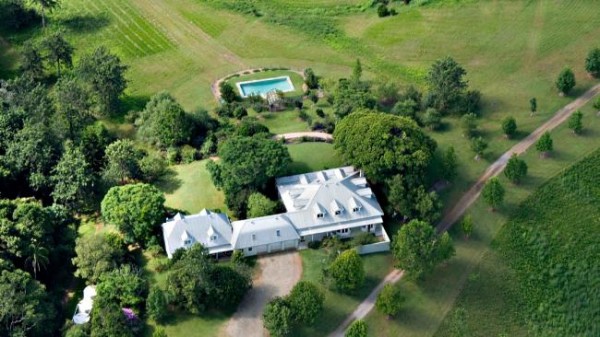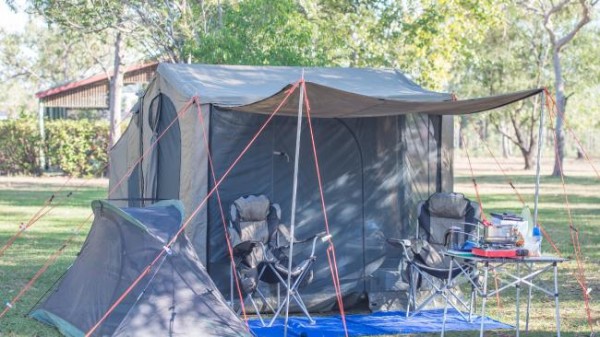Marsupial anteater, nambat
7 January, 2011
 Marsupial anteater, or nambat (Myrmecobius fasciatus) - A mammal family of marsupials, anteaters, lives in Western Australia. Marsupial anteater inhabits mainly eucalyptus and acacia forests and woodlands, dry.
Marsupial anteater, or nambat (Myrmecobius fasciatus) - A mammal family of marsupials, anteaters, lives in Western Australia. Marsupial anteater inhabits mainly eucalyptus and acacia forests and woodlands, dry.
Sizes are small marsupial anteater: body length of 17 - 27 cm, tail - 13-17 cm, weight of an adult animal ranges from 280 before 550 G. The head of a marsupial anteater flattened, an elongated snout and pointed, mouth is small. Vermiform tongue may protrude from the mouth of almost 10 cm., eyes large, pointy ears, long tail, fluffy, like proteins. Paws marsupial anteater rather short, widely spaced with strong claws, forelimbs of 5 пальцами, rear - with the 4 паfingers
Marsupial anteater - one of the most beautiful Australian marsupials: is colored gray-brown or reddish color. The hair on the back and upper thighs covered 12.6 white or cream stripes. In the eastern nambatov coloring Odnotonnye, than in Western. The muzzle is visible black longitudinal band. Belly and legs yellowish-white, buffy.
His teeth are very small marsupial anteater, weak and often asymmetrical: molars on the right and on the left are of variable length and width, just a marsupial anteater 50-52 tooth. Hard palate extends far beyond, than most mammals, which is typical of other "dlinnoyazykih" animals (pangolin, Battleships).
It feeds almost exclusively marsupial anteater termites, at least ants, other invertebrates eaten only occasionally. This is the only marsupial, which feeds only on social insects; captive marsupial anteater eats daily to 20 Thd. termites. marsupial anteater looking for food with the help of his very keen sense of smell. Clawed front paws, he digs the soil or rotten wood breaks, then sticky tongue catching termites, swallow prey whole or chewed slightly chitinous shell.
Marsupial anteater quite agile, can climb trees; at the slightest danger hiding in the shelter. He spends the night in secluded areas (shallow burrows, hollows) on a bed of bark, leaves and dry grass. Dream has a very deep, similar to hibernation. There are many cases, when people with fallen trees and accidentally burned marsupial anteater , who does not have time to wake up.
Except for the breeding season, marsupial anteaters kept singly, individual occupying an area of up to 150 hectare. Being caught,marsupial anteater does not bite or scratch, but only grunts or whistles abruptly.
The breeding season lasts from nambatov from December to April. At this time, males leave their hunting areas and go in search of females, labeling trees and land oily secretion, which produces a special skin glands on the chest.
Tiny (10 mm long), blind and naked young are born after 2 weeks after mating. The litter 04.02 cub. As the brood pouch of the female is not, they hang on the nipple, clinging to the mother's fur. According to some sources of confinement in a hole length of 1-2 m. Female carries babies on her stomach about 4 Months, until they reach the size of 4-5 cm. She then leaves the young in shallow burrows or hollow, continuing to come at night to feed.
By early September, the young begin to nambaty briefly leave the burrow. By October, they go to a mixed diet of termites and milk. Youngstock stays with his mother until 9 Months, finally leaving it in December. Sexual maturity is reached in the second year.
Due to the economic development and land clearing marsupial anteater population has declined sharply. However, the main reason for the decrease in its population - persecution of predators. Because of diurnal marsupial anteaters are more vulnerable, than most medium-sized marsupials; They are hunted by birds of prey, dingo, feral dogs and cats, especially red foxes.
Fox completely destroyed in the population of the marsupial anteater Victoria, South Australia and Northern Territory; They survived only in the form of two small populations near Perth. In the late 1970s,. nambatov fewer than 1000 individuals.
The intense security measures, destruction of foxes and reintroduction nambatov population was able to increase. However, the marsupial anteater is still part of the International Red Data Book lists the status of "endangered".
This is also interesting:
















